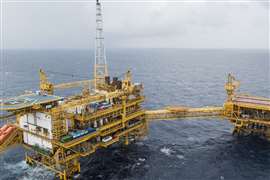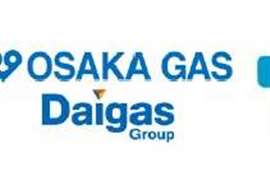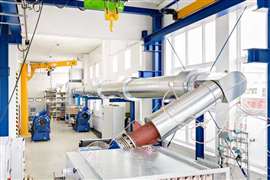Read this article in 中文 Français Deutsch Italiano Português Español
30 years of covering compression
May 01, 2025
COMPRESSORTech2 has followed ups, downs of industry
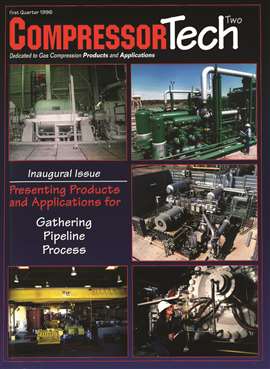 The first issue of COMPRESSORTech2 magazine.
The first issue of COMPRESSORTech2 magazine.
In 1995, few could have foreseen how drastically the natural gas and oil industry — and by extension, the compressor market — would transform. It was a time of cautious outlooks, when the prevailing belief was that North American production had peaked and new growth would come only from international markets. COMPRESSORTech2 launched amid that uncertainty, determined to provide insight into the machinery that made modern energy flow.
Thirty years on, the magazine has chronicled cycles of innovation, downturns, resurgence, and consolidation — all while the compressor industry evolved from a domestic, mature market to a global linchpin in the transition toward more efficient, cleaner energy.
The Shale Revolution
COMPRESSORTech2’s first decade of covering the industry saw the midstream see moderate growth followed by disruption. The early 2000s saw setbacks from the 9/11 attacks, the collapse of Enron, and the 2001 recession. Yet it was in the shadows of those events that the seeds of the shale revolution were sown.
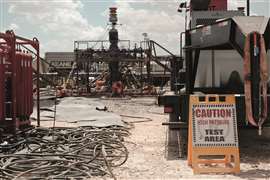 Shale fracking: A Chevron fracking site near Midland, Texas, U.S. The fracking boom led to a revolution in natural gas production.(Image: Reuters)
Shale fracking: A Chevron fracking site near Midland, Texas, U.S. The fracking boom led to a revolution in natural gas production.(Image: Reuters)
Directional drilling and hydraulic fracturing unleashed the vast reserves of hydrocarbons trapped in tight formations, particularly in the Barnett, Fayetteville, and later Marcellus and Utica shales. U.S. natural gas production, which had (theoretically) peaked in the early ’70s, began a historic climb, surpassing Russia to become the world’s top producer by 2012. Oil production followed suit, reaching new records by 2018 and catapulting the U.S. to the top of global rankings.
Compressor demand followed this boom. Massive new volumes of gas required an equally massive gathering and transmission infrastructure. Wellhead pressures that initially required single-stage reciprocating units often needed to be replaced with two- or three-stage compression as fields matured. The demand for flexibility and scalability in compression equipment surged.
Mergers, technology, and shifting demand
The industry also saw significant consolidation over the decades. By the late 2000s, players like Ariel, Superior, and Dresser-Rand were still prominent, but market shifts were reshaping the competitive landscape. Ariel, with its singular focus on reciprocating compressors, came to dominate the market, producing more than 50,000 units by 2020. Dresser-Rand was acquired by Siemens in 2015, a move that reflected the growing convergence of traditional machinery and high-efficiency automation.
In centrifugal and turbine-based compression, Solar Turbines remained dominant, expanding its lineup to meet growing pipeline infrastructure needs. Meanwhile, centrifugal compressors gained ground in high-volume, low-pressure gas and process applications, aided by developments in integrally-geared designs and increased efficiencies.
Packaging, once the domain of dozens of companies, became more streamlined. From 30 major packagers in the mid-1990s, the industry narrowed to around 19 by 2020, led by firms like A.G. Equipment, Alegacy, and Enerflex. International packagers in Europe and Asia also began to play a bigger role, particularly as demand grew for export LNG facilities and processing units globally.
The rental model and market volatility
Compression rental fleets became increasingly important, particularly in the upstream segment. Companies such as Archrock (formerly Exterran), USA Compression, and CSI Compressco built massive horsepower fleets, offering producers flexible, outsourced compression.
The COVID-19 pandemic in 2020 represented one of the most dramatic disruptions in recent memory. A sudden collapse in global energy demand due to lockdowns and economic shutdowns caused oil prices to plummet. Compressor demand contracted rapidly as upstream activity ground to a halt. Capital spending was slashed, projects delayed, and rental fleets idled.
While demand eventually rebounded in 2021 and 2022 as economies reopened, the pandemic highlighted deep structural vulnerabilities — not only in energy markets, but also in global supply chains. Compressor manufacturers faced severe backlogs due to component shortages, labor constraints, and logistics disruptions. Lead times stretched out dramatically, affecting both new equipment deliveries and aftermarket services.
Beyond short-term volatility, a more enduring shift emerged during the past decade: the industry’s alignment with environmental, social, and governance (ESG) principles. As climate change took center stage, compressor manufacturers and operators were increasingly scrutinized for their role in methane emissions, energy efficiency, and sustainability.
New regulations — including EPA’s OOOOa and OOOOb rules — put the spotlight on leak detection, flare minimization, and compressor station monitoring. Optical gas imaging, drone flyovers, and AI-driven analytics became critical tools in identifying fugitive emissions.
The industry responded with innovations such as electric motor-driven compressors, low-emission gas engines, predictive maintenance software, and real-time monitoring platforms. Big data and digital twins are now being employed to optimize performance and reduce downtime. Compression fleets are also seeing renewed investment in electrification, particularly in shale regions with access to low-carbon grid power.
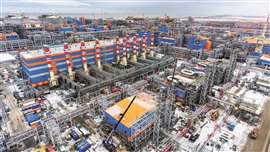 Recent history has seen the globalization of the natural gas trade, built upon liquefied natural gas (LNG). LNG exports have soared, with the U.S. becoming the world’s top LNG exporter in 2023. (Image: Maverick Values)
Recent history has seen the globalization of the natural gas trade, built upon liquefied natural gas (LNG). LNG exports have soared, with the U.S. becoming the world’s top LNG exporter in 2023. (Image: Maverick Values)
Interestingly, the same natural gas that once seemed like a fading fuel is now considered a key “bridge” in the energy transition — replacing coal in power generation and supporting intermittent renewables. LNG exports have soared, with the U.S. becoming the world’s top LNG exporter in 2023. This globalization of gas has fueled demand for compression solutions across Africa, Asia, and Latin America, often tailored for unique climates, logistics, and regulatory needs.
The pivot toward ESG principles dramatically slowed in the last few years, driven in part by both market
Consolidation and Global Reach
The last five years have also seen a surge in mergers and acquisitions, reflecting a maturing — but still fiercely competitive — market. Notable deals include:
- Siemens Energy’s acquisition of Dresser-Rand and its integration into a broader portfolio of electrified, digitized turbomachinery.
- Baker Hughes’ acquisition of Nuovo Pignone, deepening its footprint in LNG and industrial gas processing compression.
- Enerflex’s 2022 merger with Exterran, combining fabrication, processing and compression rental services under one global banner.
- Atlas Copco’s continued expansion into niche compression segments, including CO2 capture, biogas, and hydrogen.
These moves reflect the shifting center of gravity in the industry — from regional, upstream-focused markets to globally integrated systems serving power, petrochemical, and decarbonization efforts.
Workforce and the next generation
The boom-bust cycle of the last 30 years has also strained the industry’s workforce. Repeated layoffs during downturns have created a gap in institutional knowledge. Many experienced technicians, engineers, and operators have retired, while attracting younger workers has proved challenging. In response, companies have ramped up training programs, implemented user-friendly technologies, and sought partnerships with community colleges and trade schools. But the challenge remains.
Looking Forward
Despite challenges — from volatile prices and emissions scrutiny to pandemics and political uncertainty — the compression industry has not only endured but evolved. What began as a largely North American, mechanically focused industry is now global, digital, and increasingly green.
COMPRESSORTech2 has been there for all of it — from the shale dawn to the COVID disruption to the dawn of carbon capture and hydrogen blending. The next 30 years promise even more change, as compressors continue to play a crucial role in energy production, delivery, and transformation.
As the energy world changes, one thing is certain: compression remains the heartbeat of the industry. And COMPRESSORTech2 will be there, keeping pace, issue after issue.
MAGAZINE
NEWSLETTER

CONNECT WITH THE TEAM







